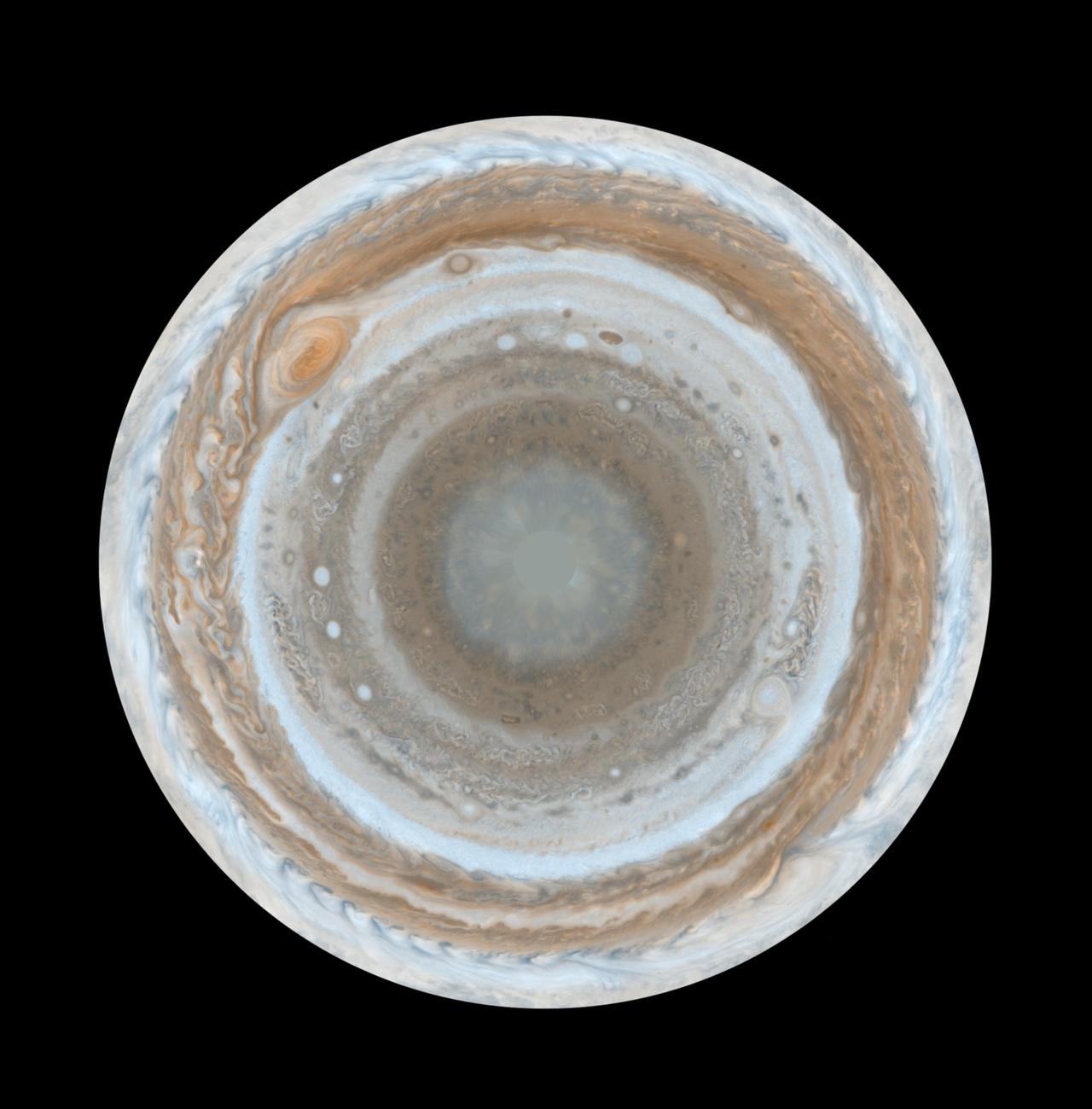Image description: A map of the planet Jupiter’s south pole, constructed from 36 images by NASA’s spacecraft Cassini while on its way to Saturn. The map, the most detailed to date, includes Jupiter’s Great Red Spot, a massive hurricane-like storm wider than three Earths that has been raging at least as long as the 400 years that humans have been observing the planet. Currently, the Juno spacecraft is on its way to Jupiter to unlock more of the giant’s secrets.
Learn more from the Juno mission website.
Image description: This artist’s concept depicts an itsy bitsy planetary system — so compact, in fact, that it’s more like Jupiter and its moons than a star and its planets. Astronomers using data from NASA’s Kepler mission and ground-based telescopes recently confirmed that the system, called KOI-961, hosts the three smallest exoplanets known so far to orbit a star other than our sun. An exoplanet is a planet that resides outside of our solar system. Learn more about these exoplanets.
Image from NASA/JPL-Caltech
NASA’s Kepler Mission announced the discovery of a newly confirmed planet, Kepler-22b. Kepler-22b is located 600 light years away, and is 2.4 times the radius of Earth. It orbits a star similar to our sun, and is the smallest found to orbit in the middle of a habitable zone. Though the planet is larger than Earth, its orbit is only 290 days. Scientists have yet to find out Kepler-22b’s composition, whether it is rocky, gaseous or liquid.
Of the 54 habitable planet candidates reported in February 2011, Kepler-22b is the first to be confirmed. The discovery of Kepler-22b brings NASA one step closer to finding Earth-like planets. The planet’s host star belongs to the same class as our sun, called G-type, although it is slightly smaller and cooler.
Kepler is NASA’s 10th Discovery Mission and is funded by NASA’s Science Mission Directorate at the agency’s headquarters.
Learn more about Kepler-22b.











